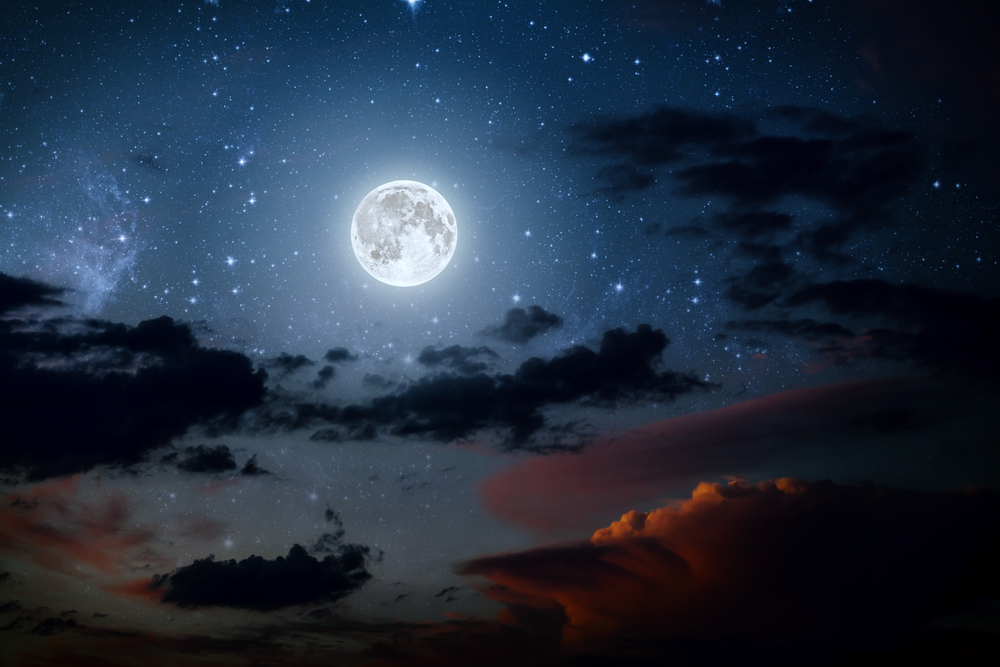
Astrology has always been a complex art, but public interest in it has grown more sophisticated. Many people now understand their birth charts and know their moon sign and house locations. Still, one important detail is often overlooked by both astrologers and laypeople: the phase of one’s moon at birth. Lunar phases provide more information about our internal emotions, private selves, and deep unconscious needs.
Tidal Locking and Lunar Phases
Two key characteristics control how the moon appears from Earth: its orbital period and rotation time. The moon makes a trip around our planet roughly every 27.3 days, and it also needs exactly that long to complete one full rotation. As a result, the same side of the moon always faces Earth. Scientists refer to this relationship as tidal locking.
The degree of light the moon reflects from the sun shifts throughout the month. Space.com breaks down how this action generates lunar phases. A new moon sits between us and the sun, so it’s only sunlit on the side not facing us. As the Moon slowly rotates on its axis, it moves away from the sun, allowing more of its illuminated side to be visible. With a full moon, the entire sunlit side can be seen.
As the Encyclopedia Britannica reveals, a synodic period is the amount of time that a celestial object needs to return to the same position relative to our sun as seen by us on Earth. For our moon, that’s the 29.5 days between one full moon and the next.
The Moon in Your Birth Chart
You may remember that birth charts are drawn with two concentric rings surrounding a large inner circle. The outer ring shows zodiac sign locations in the sky at the time of your birth, while the inner ring displays the 12 horoscope houses. Some versions use horoscope house borders to split the chart into twelve pie-shaped sections, making it easier to see specific planet-house placements.
The moon sign is probably one of the easiest to find on a birth chart. Most systems use a crescent moon to represent its spot on the chart. The problem with this method is that it usually only shows the house and sign in which the moon was when a person was born. As Iordanus explains, many charts show absolutely nothing about the moon’s phase at the individual’s time of birth.
Finding Your Birthday’s Lunar Phase
If your birth chart doesn’t show your moon’s phase, you can obtain the information through other means. Astrolocal offers a moon phase calculator that returns this information for your birth month, day, and year. The Old Farmer’s Almanac’s moon phase calendar allows you to see lunar phases for any period by inputting your desired month, year, and location. You’ll probably see the four major phases listed: first quarter, full moon, last quarter, and new moon. The first and last quarter are half-moons; the first half moon will show the right side illuminated and the last quarter moon the left.
Besides these four major phases, some astrologers pay attention to crescent and gibbous moons. Both are described as either waxing or waning, depending on whether they’re approaching a full moon or new moon. Interpretations vary widely, but Cafe Astrology provides a detailed guide. Bear in mind that this guide refers to waning gibbous and waning crescent moons as “disseminating” and “balsamic,” so you can apply those meanings.
Astrology and Subjective Interpretation
Humanity has always been fascinated by the moon. Astrologers are no different, reading and interpreting its movements in our skies. Like other celestial bodies, the moon is believed to radiate specific energies. Its key may lie in recurring cycles: initiation, sustaining, and resolution energies that may play out in our lives.

